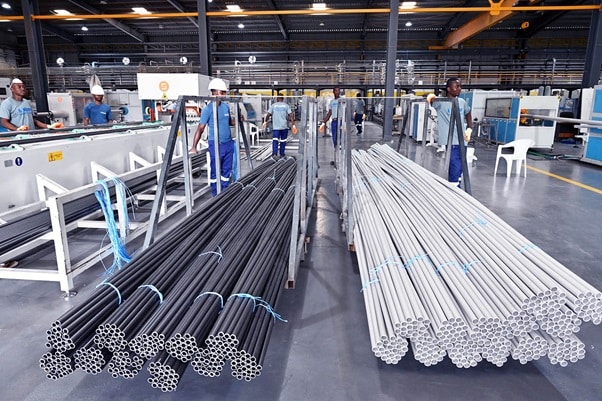Materials used in the construction and building industry needs to meet a long list of demands in order to be effective. Most workers and companies will therefore opt to find new alternatives that are both lightweight, yet incredibly durable and strong, cost-effective and easy to gather, have high manoeuvrability, are resistant to rot and corrosion, and are malleable for proper bending, extruding, or whatever is needed to fit into shapes and sizes. In this article, we explore some of the most common plastics that are frequently used in the construction industry.
Flooring Protection from Reliable Plastic Suppliers
When a home is first being constructed, there is a lot of moving parts, people stepping about in steel capped shoes, carrying a myriad of heavy or sharp materials and equipment. Homeowners will eventually opt for their floors to be decked out in tiles or wood, but until that has been completed, there is always the danger of damage. Many construction companies will therefore engage with reliable plastic suppliers in Adelaide to provide flooring protection. These plastic sheets are both light weight and simple to manoeuvre, but also incredibly tough and durable, capable of withstanding an array of impacts. To be safer, it is also non-toxic, protected against chemicals, and can even be found with flame retardant properties. This can be cut to fit whatever area needed, whether it be wide spaces in living areas, on stairs, and even up walls and columns.
Suppliers Providing Plastic Barriers to Prevent Root Expansion
Adelaide plastic suppliers will also offer construction sites high-density polyethylene barriers that stop the spread or gradual migration of plant roots during the build. Many people don’t realise how damaging spreading roots can be, as they can raise road, pavements, installations and even building foundations, causing thousands of dollars’ worth of damage. This is a cost-effective solution quick and easy to use, as it is also incredibly lightweight, yet durable in creating a shield against these roots. The way they are designed with a dimpled profile also works towards redirecting the growth of the root downwards. Alternatives would be concrete, which can be more costly, harder to install and remove, and is less effective in re-directing the root growth away from the property itself.
Other Common Plastic Materials Found on Construction Sites
There are a range of other plastics used in constructing homes and offices. For example, acrylic is a common material used for light fixtures, windows and more thanks to its higher optical clarity. Composites are, as the name suggests, comprised of multiple materials to combine their joint benefits for a specific purpose, such as fibre-reinforced polymer (FRP), used to replace various metals that are traditionally used for load-bearing tasks. Polycarbonate, however, is a more sustainable alternative builders and construction companies can use as an alternative. It is thermoplastic, meaning it can serve a purpose melted, but also withstands great impacts and holds clear transparency similar to acrylic, therefore leaving it to be used for applications demanding a great deal of strength, yet also clarity (such as eye safety equipment). Polyvinyl Chloride, also more commonly known as PVC, is used in a widespread amount of construction sites, mainly because of its cost effectiveness and high strength. You will see it mainly used in fittings, pipes, door and window profiles, and even roof membranes.

